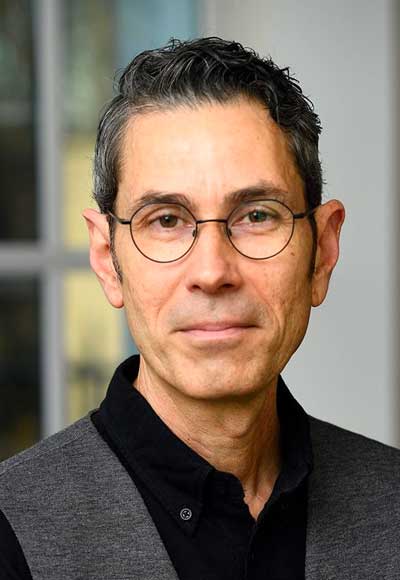
Christopher Cannon
Bloomberg Distinguished Professor of English and Classics
Contact Information
- [email protected]
- Gilman 36
- 410-516-7837
Research Interests: Medieval Latin, grammar and grammar school learning; problems of literary history; language and theories of language
Education: PhD, Harvard University
Christopher Cannon works on medieval literature and, in particular, the emergence of 'English literature' as a meaningful category. He has traced that emergence conceptually (in the intellectual contexts in which it developed), philologically (in the history of English) and, comparatively (as Latin learning produced a 'grammatical' English and its poetics).
He is the author of From Literacy to Literature (Oxford University Press, 2016), Middle English Literature: A Cultural History (2008), The Grounds of English Literature (2004), and The Making of Chaucer's English: A Study of Words (1998).
He is general co-editor of Oxford Studies in Medieval Literature and Culture (a monograph series) and of the Oxford Chaucer (an edition in progress of all of Chaucer's writing). He has held a Guggenheim Foundation Fellowship and has received the William Riley Parker Prize from the MLA (2014). He came to Johns Hopkins in 2017 after teaching at NYU, Cambridge, Oxford and UCLA.
'Malory's Comedy', in Romance Rewritten: Essays in Honor of Helen Cooper, ed. Elizabeth Archibald, Megan Leitch, and Corinne Saunders (Woodbridge, Suffolk: Boydell and Brewer, 2018).
'The Ploughman's Tale', The Yearbook of Langland Studies 31 (2017).
‘Teaching and Learning’, in Oxford Twenty-First Century Approaches Series: High Medieval: Literary Cultures in England , ed. Jocelyn Wogan-Browne and Elizabeth Tyler (Oxford: Oxford University Press, 2017).
'Wyth her owen handys': What Women's Literacy Can Teach Us about Langland and Chaucer', Essays in Criticism 66 (2016): 277-300.
'Reading Knowledge', PMLA 130 (2015): 711-17.
'Vernacular Latin', Speculum 90 (2015): 641-53.
'From Literacy to Literature: Elementary Learning and the Middle English Poet', PMLA 129 (2014): 349-64.
'The Art of Rereading' ELH 80 (2013): 401-25.
'Class Distinction and the French of England' in A Modern Medievalist: Traditions and Innovations in the Study of Medieval Literature, ed. Charlotte Brewer and Barry Windeatt (Woodbridge: Boydell and Brewer, 2012), 48-59.
'Chaucer and the Auchinleck Manuscript Revisited', The Chaucer Review 46 (2011): 131-46.
'The Language Group of the Canterbury Tales' in Medieval Latin and Middle English Literature: Essays in Honour of Jill Mann, ed. Christopher Cannon and Maura Nolan (Cambridge: D. S. Brewer, 2011), 25-40.
'Proverbs and the Wisdom of Literature: The Proverbs of Alfred and Chaucer's Tale of Melibee', Textual Practice 23 (2010): 407-34.
'The Middle English Writer's Schoolroom: Fourteenth-Century English Schoolbooks and their Contents', New Medieval Literatures 11 (2009): 19-38.
'Langland's Ars Grammatica', The Yearbook of Langland Studies 22 (2008): 1-25.
'The Lives of Geoffrey Chaucer' in The Yale Companion to Chaucer, ed. Seth Lerer (New Haven: Yale University Press, 2006), 31-54.
'Form' in Middle English: Twenty-first Century Approaches to Literature, ed. Paul Strohm (Oxford: Oxford University Press 2006), 177-90.
'The Boethianism of the Miller's Tale', Zeitschrift für deutsche Philologie, special number on 'Novellistik im Europäischen Mittelalter', ed. C. Young, T. Reuvekamp-Felber, and M. Chinca (2005): 324-44.
'Between the Old and the Middle of English', New Medieval Literatures 7 (2004), 203-21.
'The Owl and the Nightingale and the Meaning of Life', Journal of Medieval and Early Modern Studies 34 (2004): 251-78.
Chaucer's Style' in The Cambridge Companion to Chaucer, 2nd edition, ed. Piero Boitani and Jill Mann (Cambridge: Cambridge University Press, 2003), pp. 233-50.
'The Enclosed Life' in The Cambridge Companion to Medieval Women's Writing, ed. Carolyn Dinshaw and David Wallace (Cambridge: Cambridge University Press, 2003), 109-23.
'What Chaucer's Language Is', Studies in the Age of Chaucer 24 (2002): 301-8.
'The Form of the Self: Ancrene Wisse and Romance', Medium Aevum 70 (2001): 47-65.
'The Unchangeable Word: The Dating of Manuscripts and the History of English', Middle English Poetry: Texts and Traditions, ed. A. J. Minnis (Woodbridge: Boydell & Brewer, 2001), 1-15
‘La3amon and the Laws of Men’, ELH 67 (2000): 337-63.
'Malory’s Crime: Chivalric Identity and the Evil Will', chapter 8 in Medieval Literature and Historical Enquiry: Essays in Honour of Derek Pearsall, ed. David Aers (Woodbridge: Boydell & Brewer, 2000), 159-83.
'Chaucer and Rape: Uncertainty’s Certainties', Studies in the Age of Chaucer 22 (2000): 67-92 [reprinted in Representing Rape: Sexual Violence in Medieval and Early Modern Europe, ed. Elizabeth Robertson and Christine Rose (New York: Palgrave, 2001), 255-79].
'The Rights of Medieval English Women: Crime and the Issue of Representation' in Medieval Crime and Social Control, ed. Barbara A. Hanawalt and David Wallace (Minnesota: University of Minnesota Press, 1999), 156-85.
'Monastic Productions' (chapter 12) in The Cambridge History of Medieval English Literature, ed. David Wallace (Cambridge: Cambridge University Press 1999),. 316-48.
'Spelling Practice: The Ormulum and the Word', Forum for Modern Language Studies 33 (1997): 229-44.
'The Myth of Origin and the Making of Chaucer's English', Speculum 71 (1996): 646-75.
'Raptus in the Chaumpaigne Release and a Newly Discovered Document Concerning the Life of Geoffrey Chaucer', Speculum 68 (1993): 74-94.
'The Style and Authorship of the Otho Revision of La3amon's Brut', Medium Aevum 62 (1993): 187-209.
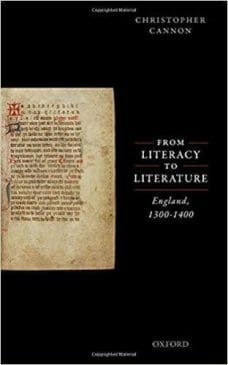
From Literacy to Literature: England, 1300-1400
- author
- Oxford University Press , 2016
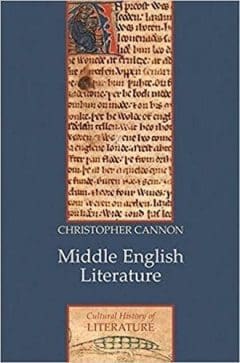
Middle English Literature: A Cultural History
- author
- Polity Press , 2008
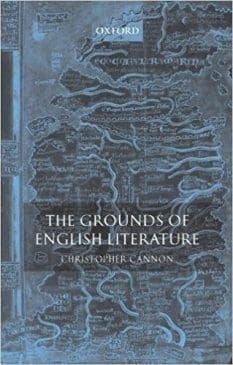
The Grounds of English Literature
- author
- Oxford University Press , 2004
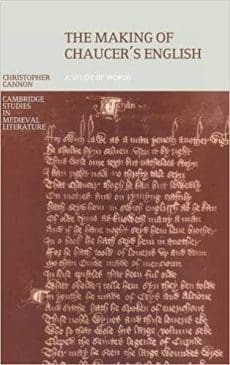
The Making of Chaucer’s English: A Study of Words
- author
- Cambridge University Press , 1998
The Sensorium of Reading is a KSAS interdisciplinary seminar at Johns Hopkins University that seeks to understand reading as it draws upon and is shaped by mind and matter alike, within the sensorium of eyes, ears, hands, fingers, tongues, throats, necks, backs and brains. We study reading enabled (and sometimes impeded) by light, air, wind, wood, stone, glass, paper, skin and an ever-expanding array of interfaces, including the ways that texts can be sounded and heard, can be touched and can touch us.